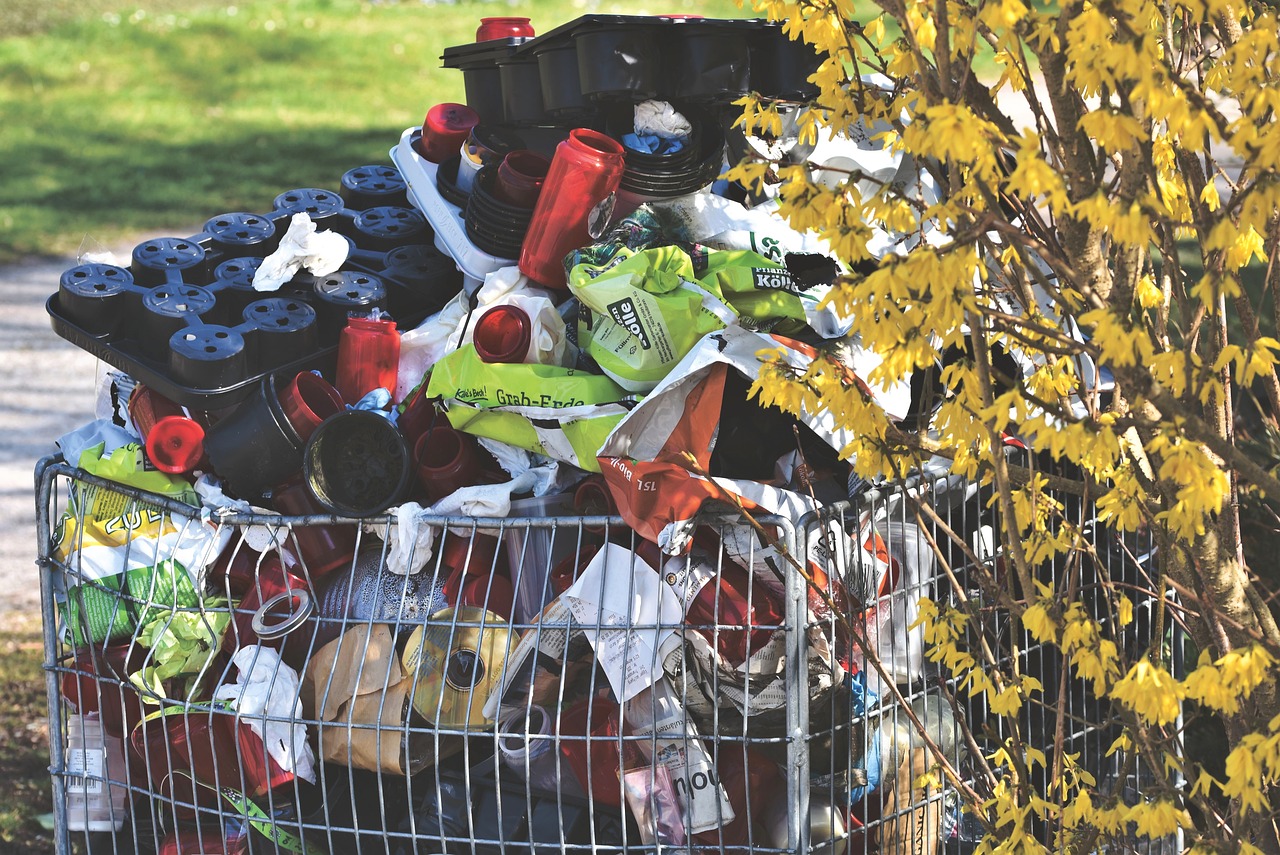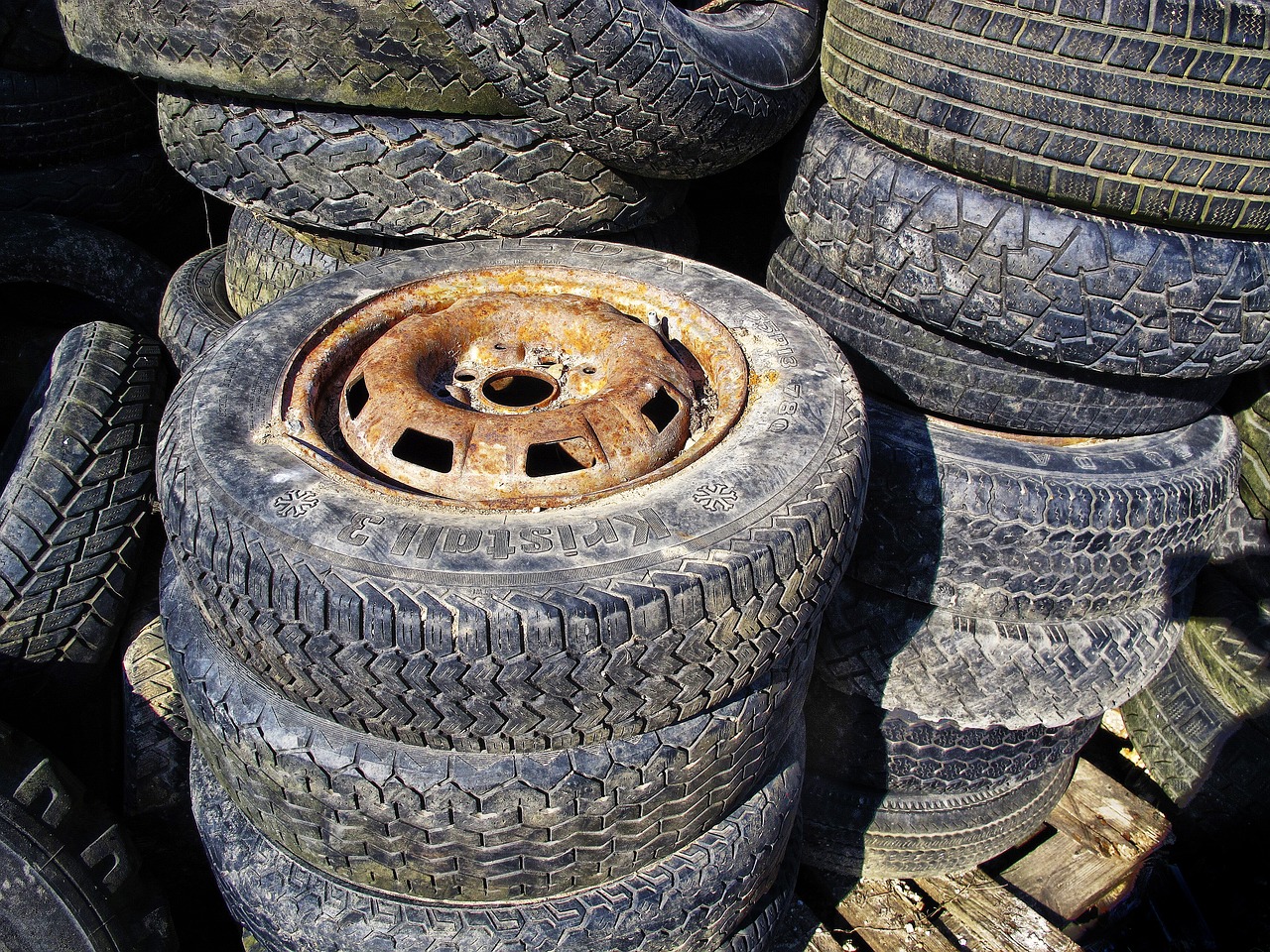How to Properly Dispose of Old Paints and Chemicals
In today's world, where environmental consciousness is at an all-time high, knowing how to properly dispose of old paints and chemicals is not just a good practice—it's a necessity. Every year, millions of gallons of paint and hazardous chemicals are thrown away improperly, leading to significant environmental damage. By understanding the guidelines for disposal, we can collectively contribute to a cleaner, safer planet. This article provides essential guidelines for safely disposing of old paints and chemicals, ensuring environmental protection and compliance with regulations while maintaining community safety.
Improper disposal of paints and chemicals can lead to severe environmental hazards. Imagine a scenario where leftover paint seeps into the soil, contaminating groundwater and harming local ecosystems. Not only does this pose a threat to wildlife, but it can also affect our drinking water supply. The risks associated with improper disposal include:
- Soil Contamination: Chemicals can leach into the ground, rendering it toxic.
- Water Pollution: Harmful substances can infiltrate water systems, affecting aquatic life and human health.
- Fire Hazards: Flammable materials can ignite, posing risks to homes and communities.
- Legal Consequences: Many regions have strict laws regarding hazardous waste disposal, and violations can lead to hefty fines.
Understanding these risks emphasizes the importance of responsible disposal practices. By taking the time to dispose of paints and chemicals correctly, we not only protect the environment but also ensure the safety of our communities.
Knowing the types of paints and chemicals you have is crucial for proper disposal. Not all paints are created equal; some are more hazardous than others. Here’s a quick breakdown:
| Type | Description | Disposal Method |
|---|---|---|
| Water-Based Paints | Less toxic, easier to clean up with water. | Recycle or dispose in household waste. |
| Oil-Based Paints | More toxic, requires special handling. | Take to hazardous waste facility. |
| Hazardous Chemicals | Includes solvents, pesticides, and other toxic substances. | Must be disposed of at hazardous waste sites. |
This categorization helps you determine the appropriate disposal method for each type of paint or chemical you have. It's essential to follow these guidelines to avoid potential hazards.
Water-based paints are generally less toxic and easier to dispose of. If you find yourself with leftover water-based paint, consider recycling it. Many communities offer recycling programs specifically for these types of paints. You can often find these programs by checking your local waste management website or contacting your city’s environmental services.
Recycling is a fantastic way to ensure that your leftover paint doesn’t go to waste. Here’s how to find recycling programs in your area:
- Check with local hardware stores or paint retailers—they often have recycling programs.
- Visit your city or county's waste management website for information on local recycling events.
- Contact local environmental organizations for recommendations on where to recycle.
If recycling isn’t an option for your water-based paints, you can safely dispose of them in your household waste. However, make sure to:
- Let the paint dry out completely before throwing it away.
- Use cat litter or sawdust to absorb the paint, making it easier to dispose of.
Oil-based paints require special handling due to their hazardous nature. These paints contain solvents and other toxic substances that can be harmful to both the environment and human health. The best way to dispose of oil-based paints is to take them to a hazardous waste facility. Many local governments have designated drop-off locations for these types of materials, ensuring they are handled safely and responsibly.
Locating appropriate disposal facilities is vital for safe paint and chemical disposal. Start by checking your local government’s website for a list of hazardous waste collection sites. Many cities have specific days when residents can drop off hazardous materials, making it convenient for everyone to participate in safe disposal practices.
Many communities host collection events for hazardous materials. These events are fantastic opportunities to safely dispose of your old paints and chemicals. Typically, you can expect:
- Convenient drop-off times and locations.
- Guidance from local officials on what materials are accepted.
- Community engagement and awareness about hazardous waste disposal.
Permanent drop-off locations provide ongoing disposal options for residents. These facilities usually accept a wide range of materials, including paints, chemicals, and other hazardous waste. To locate these facilities, check your local government’s website or call your waste management department for more information.
Proper storage can prolong the life of unused paints and chemicals. To keep them safe until you can dispose of them correctly, ensure they are stored in a cool, dry place away from direct sunlight. Make sure to keep lids tightly sealed to prevent spills and evaporation.
Labeling and organizing stored paints and chemicals is crucial for safety. Use clear, waterproof labels to identify each container. This practice not only helps prevent accidents but also makes it easier to find what you need when you’re ready to use or dispose of them.
Monitoring expiration dates helps ensure safety. Regularly check the shelf life of paints and chemicals in storage. If you notice any expired materials, make plans to dispose of them responsibly as soon as possible. Remember, just because a container is unopened doesn’t mean it’s safe to use indefinitely!
Q: Can I throw away leftover paint in the regular trash?
A: It depends on the type of paint. Water-based paints can usually be disposed of in household waste after drying out, but oil-based paints should be taken to a hazardous waste facility.
Q: How can I find local recycling programs for paint?
A: Check your local government’s waste management website or contact local hardware stores for information on paint recycling programs.
Q: What should I do with empty paint cans?
A: Empty paint cans can often be recycled, but make sure they are completely dry and free of any residue before placing them in the recycling bin.

Understanding the Risks of Improper Disposal
Improper disposal of paints and chemicals can have dire consequences for both our environment and our health. When these substances are tossed into regular trash or poured down the drain, they can leach into the soil and contaminate our water supply. Imagine the vibrant colors of your favorite paint swirling down the drain, only to end up in the very water you drink! This is why understanding the risks associated with improper disposal is crucial for every homeowner and DIY enthusiast.
One of the most alarming risks is the potential for toxic exposure. Many paints and chemicals contain hazardous materials that can lead to serious health issues, including respiratory problems, skin irritation, and even long-term diseases. For instance, oil-based paints often contain solvents like toluene and benzene, which are known carcinogens. When improperly disposed of, these chemicals can release harmful fumes that not only affect the person handling them but can also permeate the surrounding environment, posing risks to neighbors and pets.
Moreover, the environmental impact of improper disposal is profound. Chemicals can seep into groundwater, affecting not just local ecosystems but also the broader environment. Aquatic life, for example, can be severely impacted when toxic substances enter rivers and lakes. The ripple effect can lead to the decline of fish populations and the degradation of entire aquatic habitats. It’s a chain reaction that starts with a single can of paint.
To illustrate the risks further, consider the following table that outlines some common paints and chemicals, their potential hazards, and the consequences of improper disposal:
| Type of Paint/Chemical | Potential Hazards | Consequences of Improper Disposal |
|---|---|---|
| Water-Based Paints | Low toxicity, but can still cause irritation | Contamination of water sources |
| Oil-Based Paints | Contains solvents, potential carcinogens | Air pollution, soil contamination |
| Household Chemicals (e.g., cleaners, pesticides) | Highly toxic, can be corrosive | Serious health risks, ecosystem damage |
In addition to health and environmental risks, improper disposal can also lead to legal repercussions. Many localities have strict regulations regarding hazardous waste, and failing to comply can result in hefty fines. It’s not just about being a responsible citizen; it’s about protecting your community and ensuring that future generations inherit a safe and healthy environment.
In conclusion, the risks associated with improper disposal of paints and chemicals are far-reaching and serious. By understanding these risks, we can make informed decisions about how to handle and dispose of these materials responsibly. Remember, the next time you think about throwing that old can of paint in the trash, consider the broader implications of your actions. It’s not just about convenience; it’s about making a choice that reflects your commitment to safety and environmental stewardship.

Identifying Different Types of Paints and Chemicals
When it comes to disposing of old paints and chemicals, the first step is to understand what you’re dealing with. Not all paints and chemicals are created equal, and knowing the specific type can make a world of difference in how you should dispose of them. Think of it like sorting your laundry; you wouldn’t toss your delicates in with your heavy towels, right? Similarly, paints and chemicals have their own categories that dictate their disposal methods. In general, paints can be broken down into three main categories: water-based paints, oil-based paints, and hazardous chemicals.
Water-based paints are typically the easiest to manage. These paints use water as a solvent, which makes them less toxic and more environmentally friendly compared to their oil-based counterparts. They are commonly used for interior walls and ceilings. When it comes to disposal, many communities have recycling programs specifically for water-based paints. This means that if you have leftover paint from your last DIY project, you might be able to recycle it rather than just throwing it away.
On the other hand, oil-based paints are a different kettle of fish. These paints contain solvents that can be harmful to both human health and the environment if not disposed of properly. They are generally used for surfaces that require a durable finish, such as furniture or outdoor structures. Because of their hazardous nature, oil-based paints must be taken to specialized disposal facilities or hazardous waste collection events. Ignoring this can lead to serious environmental contamination, so it’s crucial to handle them with care.
Lastly, we have hazardous chemicals, which can include everything from paint thinners to solvents. These substances are often more dangerous and require special attention. If you’re unsure whether a chemical is hazardous, it’s always best to err on the side of caution and consult your local waste management guidelines. Many communities have specific regulations for these types of materials, and improper disposal can lead to hefty fines, not to mention potential harm to the environment.
To help you visualize the differences, here’s a quick comparison table:
| Type | Solvent | Disposal Method | Environmental Impact |
|---|---|---|---|
| Water-Based Paints | Water | Recycle or dispose in household waste | Lower impact |
| Oil-Based Paints | Solvents | Hazardous waste facility | Higher impact |
| Hazardous Chemicals | Varies | Specialized disposal | Very high impact |
Understanding these categories is essential not just for compliance with local regulations, but also for protecting our environment and community health. So, the next time you find yourself staring at a can of old paint or a bottle of mystery chemicals, remember: it’s not just about getting rid of it; it’s about doing it responsibly.
Q1: Can I throw away old paint in the regular trash?
A1: It depends on the type of paint. Water-based paints can often be disposed of in regular trash if dried out, while oil-based paints must be taken to a hazardous waste facility.
Q2: How can I find recycling programs for water-based paints?
A2: Check with your local waste management authority or visit their website for information on recycling programs in your area.
Q3: What should I do if I have a mix of different types of paints?
A3: It’s best to separate them by type and dispose of each according to its specific guidelines.
Q4: Are there any penalties for improper disposal?
A4: Yes, improper disposal of hazardous materials can result in fines and legal action, depending on local laws.

Water-Based Paints
When it comes to disposing of , the good news is that they are generally less toxic and easier to handle compared to their oil-based counterparts. These paints are primarily composed of water, pigments, and additives, making them more environmentally friendly. However, just because they are safer doesn’t mean we can simply toss them in the trash without a second thought! Responsible disposal is key to protecting our environment and community.
First off, if you find yourself with leftover water-based paints, consider recycling them. Many communities have established recycling programs specifically for paint disposal. These programs not only help reduce waste but also promote the reuse of materials. To find a local recycling program, you can check your city or county’s waste management website or contact them directly. They often provide information on what types of paints they accept and the procedures for drop-off.
In some cases, you may not have access to a recycling program. If that’s the case, you can still dispose of water-based paints responsibly in your household waste. However, it’s essential to follow a few steps to minimize environmental impact:
- Make sure the paint is completely dry. You can leave the lid off the can in a well-ventilated area or mix it with cat litter or sawdust to speed up the drying process.
- Once dry, seal the can tightly and place it in your regular trash. Ensure it’s not leaking or spilling.
It's important to remember that never pour paint down the drain or dispose of it in a way that can contaminate water sources. Not only is this illegal in many areas, but it can also lead to significant environmental harm. By taking the time to recycle or dispose of water-based paints properly, you're contributing to a cleaner, safer planet.
In summary, while water-based paints are easier to dispose of, it’s crucial to follow the right procedures. Whether you choose to recycle or dispose of them in household waste, always prioritize safety and environmental responsibility. By doing so, you’re not just cleaning up your space; you’re also playing a part in protecting our precious environment.

Recycling Options
Recycling old, water-based paints is not just a responsible choice; it's an opportunity to contribute positively to your community and the environment. Many local municipalities have implemented recycling programs specifically designed for this purpose. These programs allow you to drop off your unwanted paint at designated locations, ensuring that it is processed and reused rather than ending up in a landfill. But how do you find these programs, and what should you expect?
First, check with your local waste management authority or city website. They often provide detailed information about recycling options available in your area. You might be surprised to find out that many communities host regular collection events where residents can bring in their old paints and chemicals. These events not only make it convenient for you to dispose of your materials safely but also help raise awareness about the importance of proper disposal practices.
When you locate a recycling program, here are some important steps to follow:
- Check the type of paint accepted: Ensure that the program accepts water-based paints, as some facilities may only handle specific types.
- Prepare your paint: Make sure the paint containers are sealed and not leaking. If you have partially full cans, it’s best to consolidate them into fewer containers if possible.
- Follow local guidelines: Each program may have different rules regarding the amount of paint you can bring, so be sure to adhere to these regulations.
Another option for recycling is to participate in community art projects or programs that accept old paint for creative reuse. Some schools or non-profit organizations may welcome donations of usable paint for art classes or community projects. This not only helps you clear out your storage but also supports local initiatives.
In addition to local recycling programs, consider checking out paint exchange programs where you can trade unused paint with others in your community. This not only promotes recycling but also fosters a sense of community. You might find that someone else can use the color you no longer need!
Remember, recycling is not just about throwing your old paint into a bin; it’s about ensuring that these materials are handled in a way that minimizes environmental impact. By taking the time to research and utilize recycling options, you're playing a vital role in protecting our planet and making it a safer place for everyone.
Q: Can I recycle paint cans?
A: Yes, many recycling programs accept empty paint cans. Just make sure they are completely dry and clean before dropping them off.
Q: What should I do if my paint is dried up?
A: If the paint is dried up, it can often be thrown away in your regular trash. However, check local regulations as some areas have specific guidelines for disposal.
Q: Are there any fees for recycling paint?
A: Most community recycling programs do not charge fees, but it’s best to verify with your local waste management authority.

Disposal in Household Waste
When it comes to disposing of water-based paints, sometimes recycling isn't an option. In such cases, you might be wondering, "Can I just toss it in the trash?" Well, the answer is a bit more complicated than a simple yes or no. It’s crucial to ensure that we’re not harming our environment while also keeping our communities safe. Here’s a straightforward guide on how to dispose of water-based paints in your household waste.
First and foremost, you should check if your local regulations allow for water-based paints to be disposed of in the regular trash. Many municipalities have specific guidelines that dictate how to handle these materials. If you find that it’s permissible in your area, you’ll want to prepare the paint for disposal properly. This means making sure the paint is completely dried out before tossing it in the trash. Wet paint can leak and cause contamination, so we definitely want to avoid that!
To dry out the paint, you can use a few methods. One popular approach is to pour the paint into a container with absorbent materials, such as cat litter or sawdust. These materials will soak up the liquid, turning it into a solid mass that can be safely disposed of. Just make sure the container is sturdy and won’t leak. You can also leave the paint can open in a well-ventilated area, which will allow the paint to dry naturally. However, keep in mind that this method can take a bit longer, so plan accordingly.
Once the paint is dried out, you can place it in your household waste. But remember, if you have a large quantity of paint or if it’s mixed with any hazardous materials, it’s best to err on the side of caution and seek out a local hazardous waste facility instead. This ensures that everything is handled safely and in compliance with environmental regulations.
In summary, while disposing of water-based paints in household waste can be straightforward, it’s essential to follow these steps:
- Check local regulations to ensure it's allowed.
- Dry out the paint using absorbent materials or by air-drying.
- Dispose of the dried paint in your regular trash.
- If in doubt, take it to a hazardous waste facility.
By taking these precautions, you not only protect the environment but also contribute to the safety and cleanliness of your community. Remember, every small effort counts when it comes to responsible waste disposal!
Q: Can I throw away paint that is still liquid in my regular trash?
A: No, it’s important to dry out the paint first before disposal. Check local regulations for specific guidelines.
Q: What should I do if I have a large amount of old paint?
A: For larger quantities, consider taking it to a hazardous waste facility or participating in community collection events.
Q: How can I find out about local recycling programs?
A: You can check your city or county’s waste management website for information on recycling programs and disposal options for paints and chemicals.

Oil-Based Paints
When it comes to , you need to tread carefully. These paints contain solvents that make them hazardous to both human health and the environment. Improper disposal can lead to contamination of land and water sources, posing serious risks to wildlife and ecosystems. So, what’s the best way to dispose of these tricky substances? First off, it’s important to understand that oil-based paints should never be poured down the drain or thrown in the regular trash. Instead, special handling is required to ensure that they are disposed of safely and responsibly.
One of the most effective ways to dispose of oil-based paints is to take them to a hazardous waste facility. These facilities are equipped to handle toxic substances, ensuring that they are treated or disposed of in a manner that minimizes environmental impact. To find a local hazardous waste facility, you can check your city or county's waste management website or contact your local environmental protection agency. They often provide a list of facilities and their operating hours, making it easier for you to plan your visit.
In addition to hazardous waste facilities, many communities organize special collection events for hazardous materials, including oil-based paints. These events are a fantastic opportunity to safely dispose of your old paint while also keeping your community clean. Just make sure to check the event schedule in advance, as they may only occur a few times a year.
But what if you have leftover oil-based paint that you don't want to throw away? Consider donating it! Local schools, community centers, or theater groups often appreciate donations of usable paint. Just be sure to check that the paint is still in good condition and hasn't expired. If you do decide to keep some paint for future projects, store it properly in a cool, dry place, away from direct sunlight and extreme temperatures.
In summary, disposing of oil-based paints requires a bit more effort than water-based options, but it’s crucial for protecting our environment. Always remember to utilize hazardous waste facilities or community collection events, and consider donating any usable paint instead of tossing it out. By taking these steps, you’re not only keeping your home safe but also playing a part in safeguarding the planet.
- What should I do if I accidentally spill oil-based paint? If you spill oil-based paint, immediately contain the spill with absorbent materials like rags or sand. Dispose of the contaminated materials at a hazardous waste facility.
- Can I dry out oil-based paint and throw it in the trash? While you can dry out small amounts of oil-based paint using a paint hardener, it's always safer to take it to a hazardous waste facility.
- Are there any recycling options for oil-based paints? Unfortunately, recycling options for oil-based paints are limited. Check with local hazardous waste facilities for any specific programs they may offer.

Finding Local Disposal Facilities
When it comes to disposing of old paints and chemicals, one of the most critical steps is locating the right disposal facilities in your area. This can feel a bit like searching for a hidden treasure, but don’t worry; it’s easier than it sounds! First off, you can start your hunt by checking with your local government’s waste management department. Many municipalities have dedicated resources or websites that provide detailed information about hazardous waste disposal. A simple search online can lead you to the right place. You might be surprised to find that your community is more proactive about environmental safety than you think!
Besides your local government, consider reaching out to local hardware stores or paint retailers. Many of these establishments have programs in place to help with the recycling of paints and chemicals. They often know about upcoming events or permanent drop-off locations where you can safely dispose of your items. Think of them as your local guides in this eco-friendly journey!
Another fantastic resource is community bulletin boards, either online or in-person. Websites like Nextdoor or Facebook community groups can be a goldmine for information about local hazardous waste collection events. These platforms allow you to connect with neighbors who may have already navigated this process and can provide valuable tips or even share experiences from their own disposal adventures.
To make it even easier for you, here’s a quick table summarizing different ways to find local disposal facilities:
| Resource | Description |
|---|---|
| Local Government Websites | Check for information on hazardous waste disposal and collection events. |
| Hardware Stores | Inquire about recycling programs and disposal options they may offer. |
| Community Boards | Utilize online platforms and local bulletin boards for event announcements. |
Don’t forget about the importance of timing! Many communities have specific days designated for hazardous waste collection. These events can be a bit like a festival, where you can bring your old paints and chemicals and dispose of them safely. Participating in these events not only helps you clear out your garage but also contributes to the well-being of your community and environment.
Finally, keep an eye out for permanent drop-off locations in your area. These facilities typically accept hazardous waste year-round, making it convenient for you to dispose of your items whenever you need to. Just remember to check their operating hours and the types of materials they accept so you can plan your visit accordingly.
In conclusion, finding local disposal facilities is a straightforward process if you know where to look. By utilizing local resources, engaging with your community, and staying informed about collection events, you can ensure that your old paints and chemicals are disposed of safely and responsibly. After all, it’s not just about cleaning out your space; it’s about protecting our planet for future generations!
- What types of paints can be recycled? Water-based paints are generally recyclable, while oil-based paints require special handling.
- How do I find out about local hazardous waste collection events? Check your local government website or community boards for announcements.
- Can I throw away old paints in the regular trash? No, it’s not recommended to dispose of paints in regular trash due to environmental hazards.

Community Collection Events
Community collection events are a fantastic opportunity for residents to safely dispose of hazardous materials, including old paints and chemicals. These events are typically organized by local governments or environmental organizations, aiming to promote safe disposal practices while raising awareness about the potential dangers associated with improper waste management. Imagine a neighborhood gathering where everyone is united by a common goal: protecting our environment and ensuring the safety of our community. It’s not just about cleaning out your garage; it’s about taking a stand for a healthier planet!
During these collection events, you can bring your unwanted paints, solvents, and other hazardous materials to designated drop-off locations. These events usually take place on weekends, making it convenient for families to participate. You might wonder, “How do I find out when these events are happening?” Well, it’s as easy as pie! Your local government’s website or community bulletin boards often have up-to-date information on upcoming collection events. Additionally, social media platforms and neighborhood groups can serve as excellent resources for announcements.
When attending a collection event, it’s essential to prepare in advance. Here are a few tips to ensure a smooth experience:
- Check the event schedule: Make sure you know the date and time of the event.
- Sort your items: Organize your paints and chemicals by type to make the drop-off process quicker.
- Follow safety guidelines: Wear gloves and masks if necessary, especially if you’re handling particularly hazardous materials.
Once you arrive, you’ll likely find a friendly team of volunteers or local officials ready to assist you. They’ll guide you on where to drop off your items and may even provide information on recycling options and safe storage practices. It’s a great chance to ask questions and learn more about how to manage hazardous waste responsibly.
In summary, participating in community collection events not only helps you declutter your home but also contributes to a larger cause—protecting our environment. So, mark your calendars, gather your materials, and join your neighbors in making a positive impact!
Q: How often do community collection events occur?
A: The frequency of community collection events varies by location, but many municipalities hold them at least once or twice a year. Check your local government website for specific dates.
Q: What types of materials can I bring to these events?
A: Most events accept a wide range of hazardous materials, including paints, solvents, pesticides, and batteries. However, it’s always best to check the event guidelines for a complete list of acceptable items.
Q: Is there a fee for disposing of materials at these events?
A: Generally, community collection events are free for residents. However, some locations may have specific fees for certain items, so it’s wise to verify beforehand.
Q: Can I drop off items for someone else?
A: Yes, many events allow you to drop off hazardous materials for friends or family members. Just make sure you have their consent and follow any specific guidelines provided by the event organizers.

Permanent Drop-Off Locations
Finding a permanent drop-off location for your old paints and chemicals is like discovering a treasure chest in your neighborhood—one that not only helps you clean up your space but also protects the environment. These facilities are essential for safely disposing of hazardous materials, ensuring they don’t end up in landfills where they can leach harmful substances into the soil and water. But how do you find these locations, and what can you expect when you get there? Let’s dive into the details!
First off, many cities and towns have established permanent drop-off sites specifically for hazardous waste, including paints and chemicals. These locations are typically open year-round, making it convenient for residents to dispose of unwanted materials safely. To find a facility near you, consider the following steps:
- Check Local Government Websites: Many municipalities provide lists of hazardous waste drop-off locations on their official websites. Look for sections dedicated to waste management or environmental services.
- Contact Local Waste Management Authorities: If you can’t find information online, don’t hesitate to call your local waste management office. They can provide you with details about nearby facilities and their operating hours.
- Utilize Online Resources: Websites like Earth911 offer search tools where you can enter your zip code to find the nearest hazardous waste drop-off locations.
When you arrive at a permanent drop-off location, expect a structured process. Most facilities will have staff on hand to assist you. Here’s what typically happens:
- Check-In: You'll likely need to sign in and provide information about the materials you’re dropping off.
- Inspection: Staff may inspect your items to ensure they are acceptable for disposal. This helps prevent contamination and ensures safety.
- Safe Disposal: Once cleared, your items will be collected and disposed of in an environmentally friendly manner, often being sent to specialized facilities for proper treatment.
It’s essential to remember that not all materials are accepted at these locations. Common items that can typically be dropped off include:
- Oil-based paints
- Solvents and thinners
- Household cleaners
- Pesticides and herbicides
However, items such as latex paints (in some areas), electronics, and batteries may have different disposal guidelines. Always check with the facility beforehand to ensure you’re following the proper procedures.
In summary, utilizing permanent drop-off locations is a responsible way to dispose of old paints and chemicals. Not only does it keep your home safe, but it also contributes to a cleaner, healthier environment for everyone. So, the next time you find yourself with leftover paint or hazardous chemicals, remember that there’s a safe and easy way to get rid of them—just find your nearest drop-off location and take that step towards environmental stewardship!
Q: What types of materials can I drop off at permanent drop-off locations?
A: Most locations accept oil-based paints, solvents, pesticides, and certain household cleaners. Check with your local facility for specific guidelines.
Q: Are there fees associated with dropping off hazardous waste?
A: Generally, most permanent drop-off locations do not charge fees for residents. However, it's good to confirm with your local facility.
Q: Can I drop off latex paint at these locations?
A: Some facilities accept latex paint, while others may not. It's best to check in advance or look for local recycling programs that handle latex paint specifically.
Q: What should I do if I can’t find a permanent drop-off location?
A: If you can't find a permanent drop-off site, consider participating in community hazardous waste collection events, which are often held periodically.

Safe Storage of Unused Paints and Chemicals
Proper storage of unused paints and chemicals is not just about keeping your garage tidy; it’s a crucial step in ensuring safety for you, your family, and the environment. Think of your paints and chemicals as a ticking time bomb—if not stored correctly, they can lead to accidents, spills, or even hazardous reactions. So, how can you ensure that these materials are stored safely until you're ready to dispose of them? Let’s break it down!
First and foremost, you need to choose the right storage location. A cool, dry place away from direct sunlight and heat sources is ideal. Attics, basements, or outdoor sheds might seem like good options, but they can expose your materials to temperature fluctuations that could compromise their integrity. Instead, aim for a dedicated storage area inside your home, like a utility room or a closet, where conditions are stable.
When storing paints and chemicals, labeling is essential. You wouldn’t want to mix up that can of bright blue paint with a container of hazardous chemicals, would you? Clearly label each container with its contents and the date it was purchased. This practice not only helps you keep track of what you have but also allows you to monitor expiration dates effectively. For example, a simple label can read: “Latex Paint - Exp. 2024” or “Oil-Based Paint - Exp. 2023”. This way, you can easily identify what needs to be used or disposed of sooner rather than later.
Now, let’s talk about organization. Keeping your paints and chemicals arranged in a systematic way can prevent accidents. Consider using a shelving unit or a plastic bin with dividers. Group similar items together—water-based paints in one section, oil-based paints in another, and hazardous chemicals in a separate, clearly marked area. This method not only enhances safety but also makes it easier to find what you need when you’re ready to start your next project.
Another critical aspect of safe storage is ensuring that containers are tightly sealed. Always check that lids are secure after each use. A loose lid can lead to spills or evaporation, which not only wastes the product but can also create fumes that are harmful to breathe in. If you discover any containers that are damaged or leaking, handle them with care and consider transferring their contents into a new, appropriate container before storing them again.
Lastly, it’s vital to monitor the expiration dates of your paints and chemicals. Just like food in your fridge, these materials can go bad. Regularly check your inventory and dispose of any products that have reached their expiration date. Not only does this keep your storage area safe and organized, but it also prevents the accumulation of hazardous waste that could pose a risk to your health and the environment.
In summary, safe storage of unused paints and chemicals involves:
- Choosing a stable, cool, and dry location.
- Labeling each container clearly with contents and purchase dates.
- Organizing materials systematically to prevent accidents.
- Ensuring all containers are tightly sealed.
- Regularly monitoring and disposing of expired products.
By following these guidelines, you can ensure that your unused paints and chemicals are stored safely, prolonging their shelf life and minimizing risks. Remember, safety starts with you!
Q1: Can I store paints and chemicals in my garage?
A1: While you can store them in your garage, it’s essential to ensure that the temperature and conditions are stable. Avoid areas with extreme temperatures or direct sunlight.
Q2: How can I tell if my paint has expired?
A2: Check for changes in consistency, odor, or separation. If the paint has a foul smell or has thickened and clumped, it’s best to dispose of it.
Q3: What should I do if I have a leaky container?
A3: Handle it carefully and transfer the contents into a new, appropriate container. Make sure to label it correctly before storing it again.
Q4: Are there any specific storage requirements for hazardous chemicals?
A4: Yes, hazardous chemicals should be stored in a cool, dry place, away from children and pets, and in a clearly marked area to avoid accidental exposure.

Labeling and Organizing
When it comes to storing unused paints and chemicals, these materials is not just a matter of convenience; it's a crucial safety measure. Imagine rummaging through a cluttered garage, searching for that one can of paint you used last summer, only to find several unlabeled containers of unknown substances. This scenario can lead to accidents and environmental hazards. To avoid this, take the time to create a clear and organized system for your paints and chemicals.
Start by using durable labels that can withstand the test of time. You might want to consider using waterproof labels or even permanent markers for writing directly on the containers. Make sure to include essential information such as the type of paint or chemical, its color, and any safety warnings associated with it. For instance, if you have an oil-based paint, clearly mark it as such, along with any precautions you should take when handling it.
Organizing your storage space is equally important. Designate a specific area for paints and chemicals, away from children and pets. You can use shelves, cabinets, or bins to keep everything in its place. Group similar items together; for example, keep all water-based paints on one shelf and oil-based paints on another. This not only makes it easier to find what you need but also minimizes the risk of mixing incompatible substances.
To further enhance your organization, consider creating a simple inventory list that details what you have on hand. This list can be as straightforward as a piece of paper taped to the inside of your storage door, or you could use a digital format if you prefer. Include columns for the item name, quantity, and expiration date. Regularly updating this list will help you keep track of what needs to be used up or disposed of, ensuring you don't hold onto materials longer than necessary.
In addition to labeling and organizing, it’s vital to monitor the condition of your stored items. Over time, paints can separate or dry out, and chemicals can become unstable. Regularly check your supplies, and if you notice anything unusual, such as leaks or strange odors, take action immediately. This proactive approach not only keeps your storage area safe but also helps you maintain a responsible attitude towards hazardous materials.
In summary, effective labeling and organizing of paints and chemicals can dramatically reduce risks associated with improper storage. By taking these steps, you’re not only ensuring your safety but also contributing to a healthier environment for your community. Remember, a little effort in organizing today can prevent a big headache tomorrow!
- What should I do if I find expired paint or chemicals? It's best to dispose of them at a hazardous waste facility or during a community collection event.
- Can I mix different types of paints for disposal? No, mixing paints can create hazardous reactions. Always dispose of them separately.
- How can I tell if a paint is water-based or oil-based? Check the label; water-based paints often mention 'latex' or 'acrylic,' while oil-based paints will specify 'oil' or 'alkyd.'
- Are there any specific regulations for disposing of hazardous materials? Yes, regulations vary by location, so it's important to check with your local waste management authority.

Monitoring Expiration Dates
When it comes to storing paints and chemicals, one of the most critical aspects to consider is . Just like food, these substances have a shelf life, and using expired materials can lead to disastrous results, not only in terms of performance but also in safety. Imagine opening a can of paint that has gone bad; it can become lumpy, ineffective, and even hazardous. Therefore, keeping an eye on those expiration dates is essential for anyone who wants to ensure their projects go smoothly.
So, how do you keep track of these expiration dates? First, make it a habit to check the labels on your paint and chemical containers regularly. Most manufacturers will print a “best by” or “expiration” date directly on the can. If you find that your paint is nearing its expiration date, it’s time to consider how you can use it up or dispose of it properly. You wouldn’t want to end up with a garage full of expired materials that are not only useless but could also pose a risk if they leak or become unstable.
Additionally, it’s a good idea to organize your storage area. By grouping paints and chemicals by their expiration dates, you can easily identify which products need to be used first. Consider creating a simple chart or table to help you monitor these dates. For example:
| Product | Expiration Date | Action Needed |
|---|---|---|
| Latex Paint | 01/2025 | Use or recycle |
| Oil-Based Paint | 06/2024 | Dispose of properly |
| Thinner | 12/2023 | Use or dispose |
This way, you can not only ensure that you’re using your materials while they’re still effective, but you’re also taking proactive steps to minimize waste and environmental impact. Remember, expired paints and chemicals can be a safety hazard. They may not only fail to perform as expected but can also release harmful fumes or become unstable, leading to potential accidents.
In conclusion, monitoring expiration dates is not just a good practice; it’s a necessity for anyone dealing with paints and chemicals. By keeping track of these dates, organizing your storage, and taking appropriate action when products near their expiration, you can ensure a safe and efficient workspace. So, next time you stock up on your favorite paint, make a mental note to keep an eye on that expiration date!
- What should I do with expired paint? Dispose of it at a local hazardous waste facility or participate in community collection events.
- How can I tell if my paint has gone bad? Look for changes in texture, smell, or color. If it appears lumpy or has a foul odor, it’s likely expired.
- Can I still use paint after its expiration date? It’s not recommended, as expired paint may not adhere properly or could release harmful chemicals.
Frequently Asked Questions
- What should I do with leftover paint?
Leftover paint can often be recycled or disposed of safely. For water-based paints, check with local recycling programs. If recycling isn't available, you can let the paint dry out and throw it away with your regular household waste. Just make sure it’s completely dried out to avoid spills!
- How do I know if my paint is hazardous?
Typically, oil-based paints and those labeled as hazardous materials contain chemicals that can be harmful. If your paint has a strong odor, is flammable, or has a warning label, it’s likely hazardous. Always read the label for specific disposal instructions.
- Where can I find local disposal facilities for paints and chemicals?
You can find local disposal facilities by checking your city or county’s waste management website. They usually have a list of hazardous waste collection sites and upcoming collection events. You can also call your local recycling center for more information!
- What happens if I dispose of paint improperly?
Improper disposal can lead to environmental contamination, harming wildlife and water sources. It’s also against the law in many places, which can result in fines. It’s crucial to follow local guidelines to keep our communities safe!
- Can I store paint and chemicals long-term?
Yes, you can store paint and chemicals, but they should be kept in a cool, dry place away from direct sunlight. Make sure to label them clearly and monitor their expiration dates. If they’re past their prime, it’s best to dispose of them properly.
- Are there specific collection events for hazardous materials?
Absolutely! Many communities organize special collection events for hazardous materials. These events allow residents to drop off unwanted paints and chemicals safely. Check your local government’s website for details on upcoming events!
- What should I do if I accidentally spill paint?
If you spill paint, act quickly! For small spills, use absorbent materials like kitty litter or sand to soak it up before disposing of it in a sealed bag. For larger spills, you may need to contact a hazardous waste disposal service to ensure it’s cleaned up safely.



















